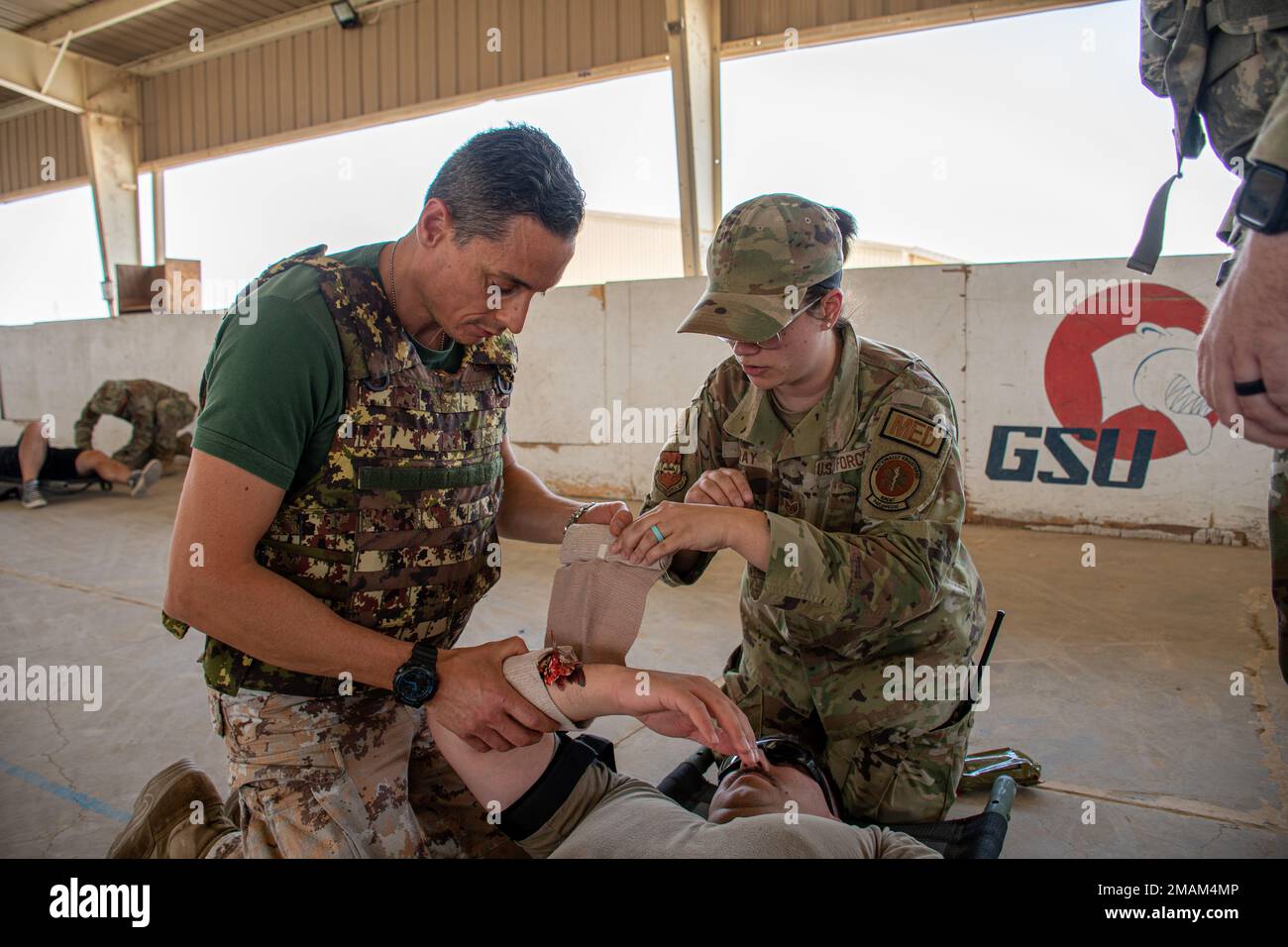U.S. Air Force Staff Sgt. Elissa Gray, right, paramedic, 386th Expeditionary Medical Group, explains to an Italian Army coalition partner, how to properly apply a bandage to control simulated massive bleeding on Staff Sgt. Matthew Depodesta, firefighter, 386th Expeditionary Civil Engineer Squadron, during the joint coalition Tactical Combat Casualty Care course at a skating rink at Ali Al Salem Air Base, Kuwait, May 29, 2022. In the TCCC course, which replaced the Self-Aid Buddy Care course, U.S. service members and coalition partners practiced applying a tourniquet, wrapping a bandage and ope

Image details
Contributor:
Operation 2022 / Alamy Stock PhotoImage ID:
2MAM4MPFile size:
59.1 MB (2.7 MB Compressed download)Releases:
Model - no | Property - noDo I need a release?Dimensions:
5568 x 3712 px | 47.1 x 31.4 cm | 18.6 x 12.4 inches | 300dpiDate taken:
29 May 2022More information:
This image could have imperfections as it’s either historical or reportage.
U.S. Air Force Staff Sgt. Elissa Gray, right, paramedic, 386th Expeditionary Medical Group, explains to an Italian Army coalition partner, how to properly apply a bandage to control simulated massive bleeding on Staff Sgt. Matthew Depodesta, firefighter, 386th Expeditionary Civil Engineer Squadron, during the joint coalition Tactical Combat Casualty Care course at a skating rink at Ali Al Salem Air Base, Kuwait, May 29, 2022. In the TCCC course, which replaced the Self-Aid Buddy Care course, U.S. service members and coalition partners practiced applying a tourniquet, wrapping a bandage and opening the airway by using the head tilt/chin-lift or jaw thrust maneuver. TCCC was designed to help lessen preventable combat deaths by providing proven trauma stabilization techniques, allowing for the wounded to survive long enough to receive life-saving treatment at a medical facility.